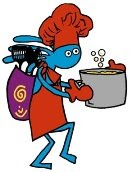According to historians, the earliest Father's Day traditions can be traced back to the ruins of Babylon nearly 4,000 years ago. They recorded that a young boy named Elmesu carved a message on a clay card to his father, wishing him a long and healthy life. There is no knowledge as to what happened to Elmesu & his father but the tradition of celebrating Father’s Day remains in several countries all over the world.
The tradition of celebrating Father's Day in the United States as we do today originated slightly more than a century ago by Ms. Sonora Louise Smart Dodd; the idea occured to her as she was listening to a Mother's Day sermon in 1909. A doting daughter from Spokane, Washington, Ms. Dodd is recognized as the Founder of the Father's Day Festival.
Sonora wanted a special day to honor her father, William Smart, a widowed Civil War veteran. She was 27 at the time, and had begun to recognize the hardships her father must have gone through while solely bringing up his six children (including the newborn). Her mother had died during childbirth when Sonora was sixteen.
A day in June was chosen for the first Father's Day celebration — June 19, 1910, proclaimed as such by Spokane's mayor because it was the month of Smart's birth. The idea of celebrating Father's Day became so popular in the United States that President Woodrow Wilson approved of the festival in 1916. President Calvin Coolidge also supported the idea but it was President Lyndon Johnson in 1966 who signed a Presidential Proclamation declaring the third Sunday of June as Father's Day. In 1972, President Richard Nixon established a permanent national observance that Father's Day be held on the third Sunday of June.
ANIMAL DADS: Many animals never meet their fathers and some never meet their mothers. Some insects, fish, amphibians and reptiles hatch from fertilized eggs and face life completely alone. When animals are raised by parents, it's most often the mother who does the rearing. But there are some unusual dads out there in the animal kingdom.
Catfish: A father sea catfish keeps the eggs of his young in his mouth until they are ready to hatch. He will not eat until his young are born, which may take several weeks.
Cockroach: A father cockroach eats bird droppings to obtain precious nitrogen, which he carries back to feed his young.
Frog: The male Darwin frog hatches his eggs in a pouch in his mouth. He can eat and continue about his business until his tadpoles lose their tails, become tiny frogs, and jump out of his mouth!
Monkey: Marmosets are tiny South American monkeys. The father marmosets take care of their babies from birth. When the marmoset is born, the father cleans it, then carries it to the mother only when it needs to be nursed. When the baby can eat solid food, the father will feed it.
Penguin: A father Emperor penguin withstands the Antarctic cold for 60 days or more to protect his eggs, which he keeps on his feet, covered with his feathered flap. During this entire time he doesn't eat a thing. Most father penguins lose about 25 pounds while they wait for their babies to hatch. Afterward, they feed the chicks a special liquid from their throats. When the mother penguins return to care for their young, the fathers go to sea to eat and rest.
Sea horse: The male sea horse has a pouch in which the mother lays her eggs. The father then looks after the eggs for about two months, until they hatch and leave the pouch. He continues to protect the young until they are able to live on their own.
Wolf: When the mother wolf gives birth to pups, the father stands guard outside their den and brings food to the mother and pups. As they grow, he not only plays with them but also teaches them how to survive. Wolves continue to live together much as human families do.
(Sources: www.fathersdaycelebration.com/fathers-day-history.html,
www.infoplease.com/spot/fathersdayhist.html)
We’ve selected a recipe for grilled stuffed pork chops this month that will be great for your Father’s Day Dinner! The recipe is from one of our favorite cookbooks, "Secrets of Caveman Cooking" by Rick Snider. Permission to print granted by Golden West Publishers, 4113 N. Longview, Phoenix, AZ 85014.
STUFFED PORK CHOPS
Sometimes, one meat just isn’t enough for a hungry caveman. He wants pork and chicken or sausage and beef. If you can stuff a turkey, you can stuff a pork chop. Just buy the special thick ones!
- 6 (6 ounce) butterfly cut PORK CHOPS
- 12 ounces CHICKEN FILETS
- ½ cup HONEY
- 2 Tbsp. BROWN SUGAR
- ½ cup SESAME SEEDS
- ½ cup BARBECUE SAUCE (recipe provided below)
SWEET SAUCE
- 2 cups KETCHUP
- 2 cups SUGAR
- ½ cup WATER
- 1 cup LEMON JUICE
- 3 tsp. BUTTER
- 2 tsp. MOLASSES
- 1 tsp. HONEY
- 1 tsp. HOT SAUCE
- 1 tsp. STEAK SAUCE
